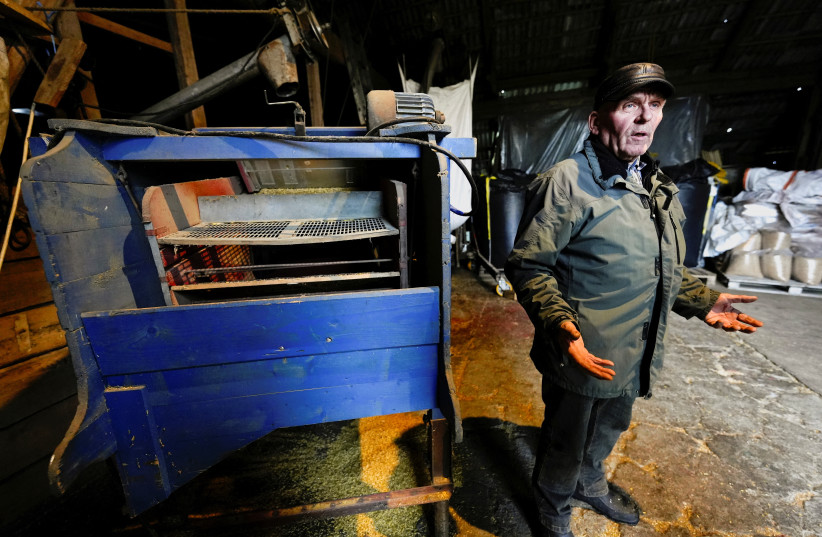A farmer in Lithuania is having to burn the oats he grows to feed his sheep and the wheat used to make bread in order to heat his home after the price of wood pellets shot up following the invasion of Ukraine.
"I burn bread for fuel. I was born to grow grain for bread, for food, but the economic crisis is making me do this."
Petras Vaitelis, Lithuanian farmer
Since imports of wood products from Russia and its ally Belarus were banned due to sanctions, the pellets which Petras Vaitelis, 72, used for his heating have soared to 600 euros per ton, more than three times higher than last year.
With the price he could sell grain staying much the same, Vaitelis found it made the most sense to burn it for heat.
"I'm a farmer, so my heart is hurting when I do this," Vaitelis, who previously ran for parliament, told Reuters at his farm in Azuolaiciai, a village in central Lithuania.

"I burn bread for fuel. I was born to grow grain for bread, for food, but the economic crisis is making me do this."
Vaitelis found oats to be the best grain for burning in the heating stove, mixed with wood pellets to keep the flame going. He plans to add wheat, which is more calorific, during the coldest winter days.
"I would need to sell 6 tons of oats for 1 ton of wood pellets. So what kind of fool would burn wood pellet and not oats?" he said. The oats were intended for his sheep, so he slaughtered them early, he said.
What brought about the wood shortage?
The shortage of wood and woodchip began early this year when the imports were banned and its impact may last beyond the immediate crisis, due to the time needed to grow it.
Much of the remaining woodchip supply was sold into Western Europe, as the rising gas prices increased demand for alternative fuels, Vaidas Jonutis, head of trading at Baltic biofuel exchange Baltpool, said.
"The shortage is so acute that we are now burning higher quality wood, which last year would be used to make furniture", he said.
"The prices have stabilized by now, and we see wood industry investments which will increase supply. But it would take 2-3 years to take effect, and I don't think woodchip will ever become as cheap as it was before the invasion," Jonutis said.
